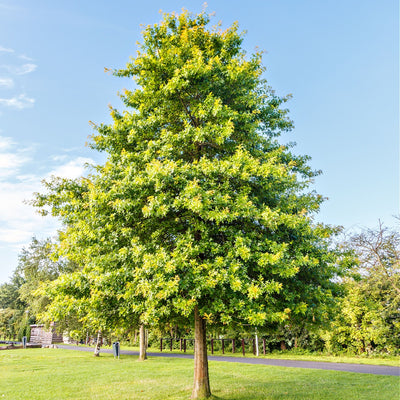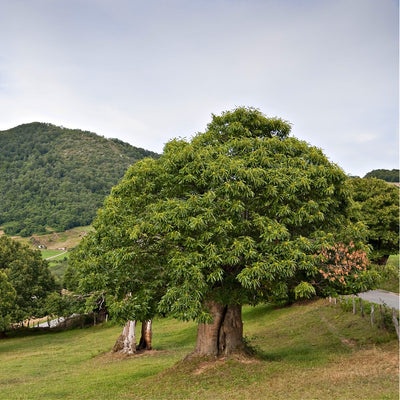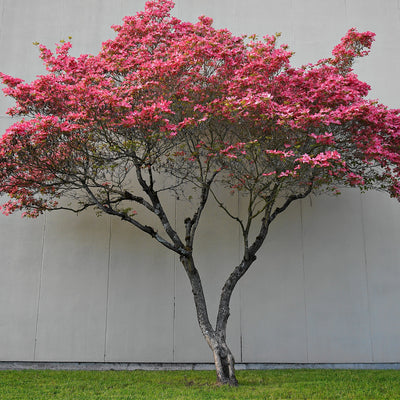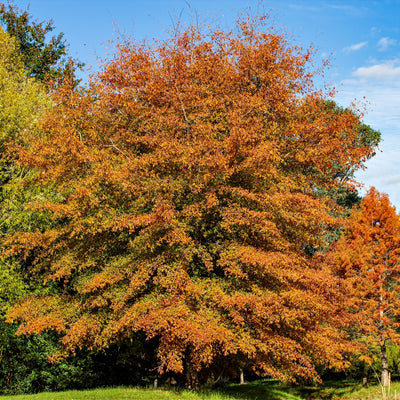Oak Trees And Their Numerous Varieties We Offer
January 13, 2023
Oak Trees and Their Numerous Varieties
If you’ve ever lived in a house, drank a glass of wine, sat in a rocking chair, or walked in a park, you have benefited from Oak trees. From Viking battleships to luxury wine barrels, Oak trees have provided long-lasting building material for hundreds of years, Not to mention countless hours of shade from the sun’s rays. Oak is a mainstay in modern life. Yet, not everyone is familiar with the countless oak tree varieties, and arborists estimate that there are over 600 species. Take a look at a few of them:
Oak trees are a prime example of a deciduous tree. They shed their leaves seasonally and provide significant environmental benefits.
The white oak tree, or Quercus alba, is one of the oldest known oak species, producing white oak acorns that mature quickly and are preferred by wildlife. Despite their name, these trees do not possess white bark and are known to reach maximum heights of 70-90 feet. Most white oak trees adapt well in high-altitude environments and grow best in deep, well-drained soil. They are considering planting in the fall and allowing plenty of room for its deep root system to expand.
Also known as Swamp Spanish oak, the pin oak grows between 60 and 70 feet tall and is native to North America. This tree has many unique aspects, such as not shedding its leaves in the winter until new leaves arrive in the fall. The pin oak grows best on a level floodplain or river bottoms. Best known as red oak, the wood is used for construction or firewood.
The chestnut oak is part of the white oak species. Primarily found in the eastern United States, this tree grows best in dry habitats but is sometimes found in web bottomlands. Don’t expect the chestnut oak to reach towering heights. With an estimated 60-70 feet in height, this common oak tree has dark brown bark and leaves five to nine inches long. These trees love moist, well-drained, and somewhat acidic soil.
Best known for its shiny bark, the red oak (or champion oak) is native to North America and grows to heights of 100-150 feet. This tree is found in parks around the United States and has a diverse growing area. These trees grow great in sandy soil and in sunny or shady conditions. However, planting with maximum exposure to the sun guarantees this tree will grow faster.
The Shumard oak tree is one of the largest red oak species. The bark of this tree is also known as “reflection bark†because of its shiny texture. As the Shumardi oak ages, its bark gets darker. This tree can reach heights up to 80-120 feet and grows best in low sunlight areas. It is also one of the few drought-resistant oak trees. As with most new oak trees, consider placing 3-inches of mulch around your tree for protection
This medium-sized tree grows to about 70-90 feet and is popular in malls and subdivisions. The Wilow Oak grows extremely fast and is planted in various environments. The willow oak starts producing acorns after 15 years, much faster than most oak varieties. The leaves turn light to bright green in the summer and grow fine in poorly drained soil.
Found in the foothills of California and Oregon, the Black oak tree has smooth and light bark. It grows to heights of 30-80 feet, making it one of the shortest varieties in its species. A unique feature is its ability to store water and nutrients in its root system. Plant in a moist, rich, and deep soil and start watering once a day for a week, gradually increasing to once per week.
The water oak tree is found in virtually every part of the United States. It is a medium-sized tree capable of growing up to 70-100 feet tall. This tree is known as a wetland tree and can adapt to a variety of environments. It grows in clay, sand, and bottomlands. With blue and greenish leaves, this tree is unique in its texture and look.
The cherry bark oak tree, known for its dark green leaves, looks exactly like its name. With heights reaching 100-130 feet, this tree is slightly larger than its counterparts. It has dark green and smooth leaves. Plant your tree in well-drained soil (without too much clay), and make sure it is far away from wetlands.
#oak trees #landscape #shade trees #idea #tips #tn nursery #wholesale nursery co #online plant nursery #tennessee wholesale nursery
Types of Oak Trees
Oak trees are a diverse group of deciduous trees, boasting over 500 species worldwide. They are generally divided into two main categories: white oaks and red oaks. White oaks, such as the White Oak and Chestnut Oak, are known for their rounded leaf lobes and lighter bark. On the other hand, red oaks, including the Red Oak and Pin Oak, feature pointed leaf lobes and darker, more furrowed bark. Each oak tree type has unique characteristics, growth habits, and uses. For instance, the Scarlet Oak is admired for its vibrant fall foliage, while the Bur Oak is valued for its massive size and resilience. Whether you’re looking for a majestic shade tree or an ornamental tree to enhance your landscape, there’s an oak tree variety to suit your needs.
Native Oak Trees
Native oak trees play a crucial role in many ecosystems, providing essential food, shelter, and habitat for various wildlife. These trees are highly valued for their strength, longevity, and adaptability to local climates and soil conditions. Examples of native oak trees include the White Oak, Live Oak, Red Oak, Black Oak, and Pin Oak. These species are well-suited for landscaping and reforestation efforts, as they are naturally adapted to thrive in their native environments. By planting native oak trees, you can support local wildlife, promote biodiversity, and contribute to the health and stability of your local ecosystem.
Hybrid Trees
Hybrid oak trees result from cross-breeding between different oak species, often combining the best traits of both parent trees. These hybrids can exhibit improved growth rates, increased disease resistance, and enhanced timber quality. One notable example is the Totten Oak, a cross between the Swamp Chestnut and Overcup Oak. Hybrid oak trees are versatile and can be used for various purposes, including landscaping, timber production, and creating wildlife habitats. Their unique characteristics make them an excellent choice for those looking to benefit from the strengths of multiple oak species.
Benefits of Planting Oak Trees
Planting oak trees offers numerous benefits for the environment, wildlife, and human communities. Oak trees provide vital food and habitat for many wildlife, including birds, mammals, and insects. They also contribute to better air quality by capturing and storing carbon dioxide, helping to mitigate climate change. Additionally, oak trees offer significant shade, reducing temperatures and providing a cool respite during hot weather. Their extensive root systems help stabilize soil, preventing erosion and promoting healthy soil structure. Beyond their environmental benefits, oak trees are also highly valued for their majestic and stately appearance, enhancing the beauty of parks, streets, and gardens.
Choosing the Right Oak Tree
Given the many species and varieties available, selecting the right oak tree for your landscape or reforestation project can be a rewarding yet challenging task. When choosing an oak tree, consider factors such as climate, soil type, available space, and intended use for shade, timber, or wildlife habitat. Popular choices for landscaping include the Pin Oak, Red Oak, White Oak, and Willow Oak, each offering unique aesthetic and functional benefits. For wildlife habitat creation, native species like the Bur Oak, Chestnut Oak, and Black Oak are excellent options. Consulting with a forestry expert or arborist can help you determine the best oak tree species for your specific needs and conditions, ensuring a successful and sustainable planting.






